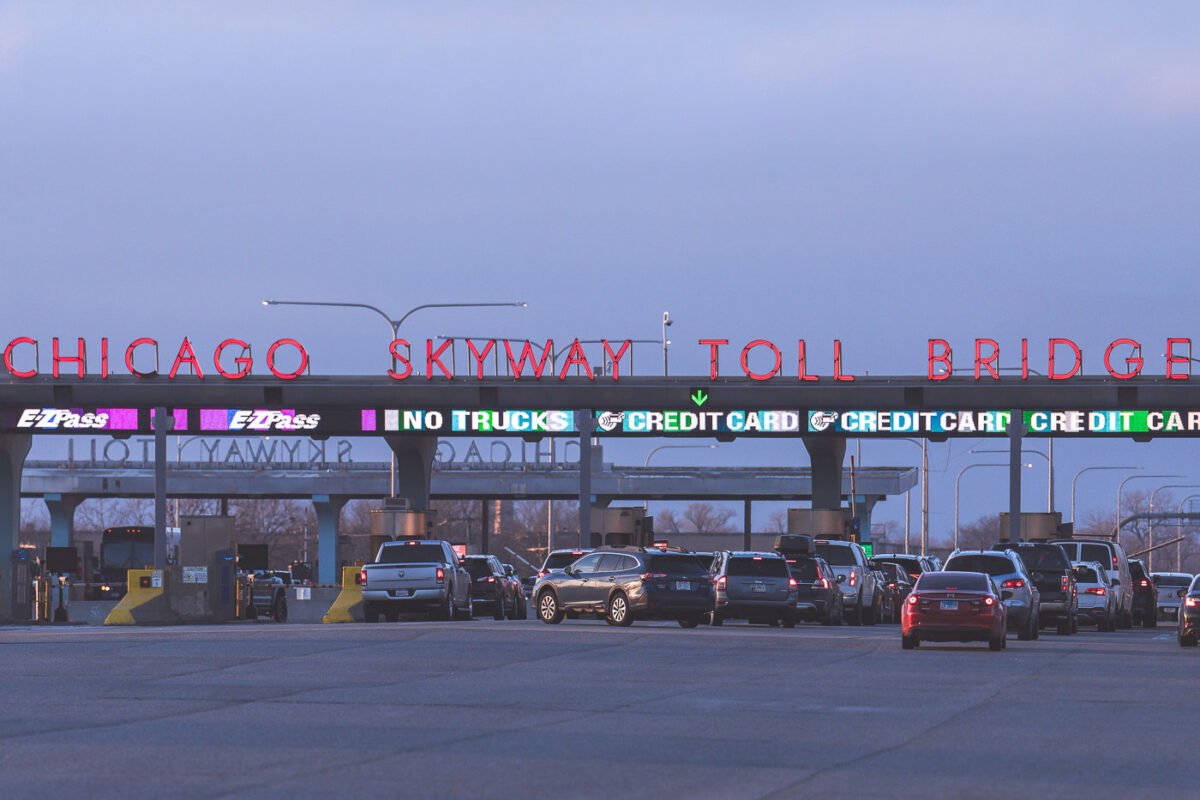
Chicago Skyway Toll Bridge sign
The Chicago Skyway Toll Bridge on Interstate 90 in Illinois.
Explore photos and posts tagged Chicago.

The Chicago Skyway Toll Bridge on Interstate 90 in Illinois.
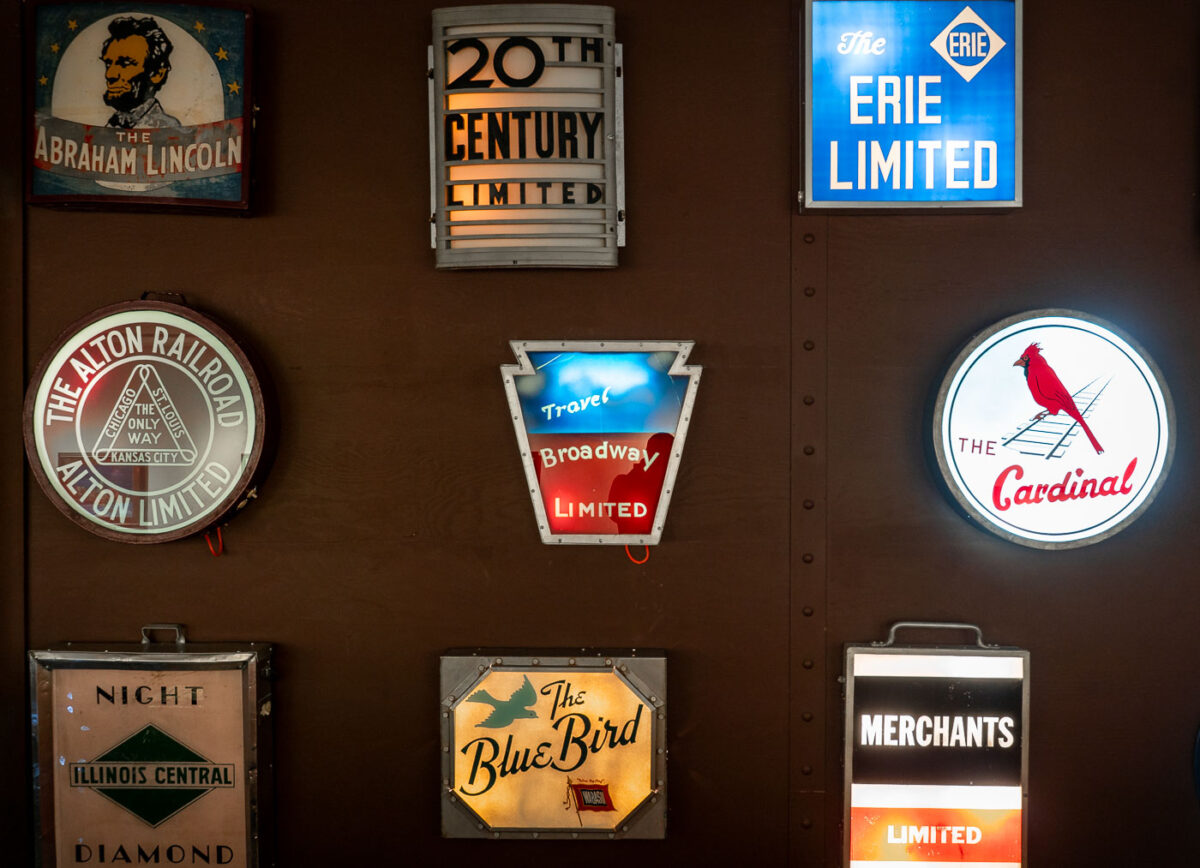
Seen inside the Green Bay Railroad Museum, an exhibit of historic railroad drumhead signs, once mounted on the observation cars of famous American passenger trains. These illuminated signs served both as branding and a wayfinding tool for travelers during the golden age of rail.
• 20th Century Limited – The legendary New York Central luxury express between New York and Chicago, famous for its red carpet treatment.
• Broadway Limited – The Pennsylvania Railroad’s flagship train, symbolized by its keystone-shaped sign.
•The Cardinal – Still in operation today as an Amtrak route between New York and Chicago via Washington, D.C. and Cincinnati.
•The Abraham Lincoln – Operated by the Alton Railroad between Chicago and St. Louis.
•The Blue Bird – Another Alton Railroad streamliner that connected Chicago and St. Louis.
•Erie Limited – A long-distance train operated by the Erie Railroad.
•Night Diamond (Illinois Central) – A named overnight passenger service.
•Merchants Limited – A New Haven Railroad luxury train between Boston and New York, a favorite among business travelers.
•20th Century Limited – The legendary New York Central luxury express between New York and Chicago, famous for its red carpet treatment.
•Broadway Limited – The Pennsylvania Railroad’s flagship train, symbolized by its keystone-shaped sign.
•The Cardinal – Still in operation today as an Amtrak route between New York and Chicago via Washington, D.C. and Cincinnati.
•The Abraham Lincoln – Operated by the Alton Railroad between Chicago and St. Louis.
•The Blue Bird – Another Alton Railroad streamliner that connected Chicago and St. Louis.
•Erie Limited – A long-distance train operated by the Erie Railroad.
•Night Diamond (Illinois Central) – A named overnight passenger service.
•Merchants Limited – A New Haven Railroad luxury train between Boston and New York, a favorite among business travelers.
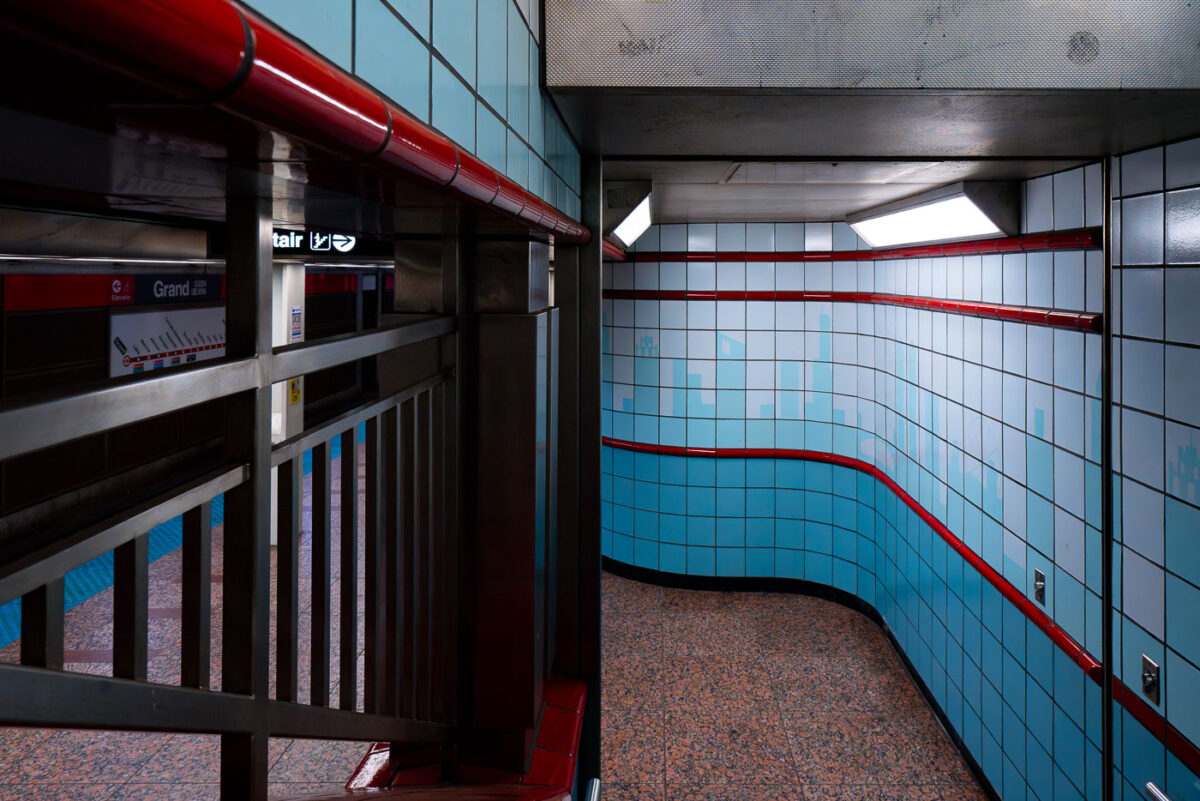
Inside a tiled subway passageway, light blue and red accents curve along the walls, leading commuters toward the platform below. The design is distinctly retro, with polished tiles and fluorescent lighting evoking a mid-20th-century aesthetic found in older metro systems. The turn of the corridor reveals a glimpse of signage and station names, grounding the space in the everyday flow of city life.
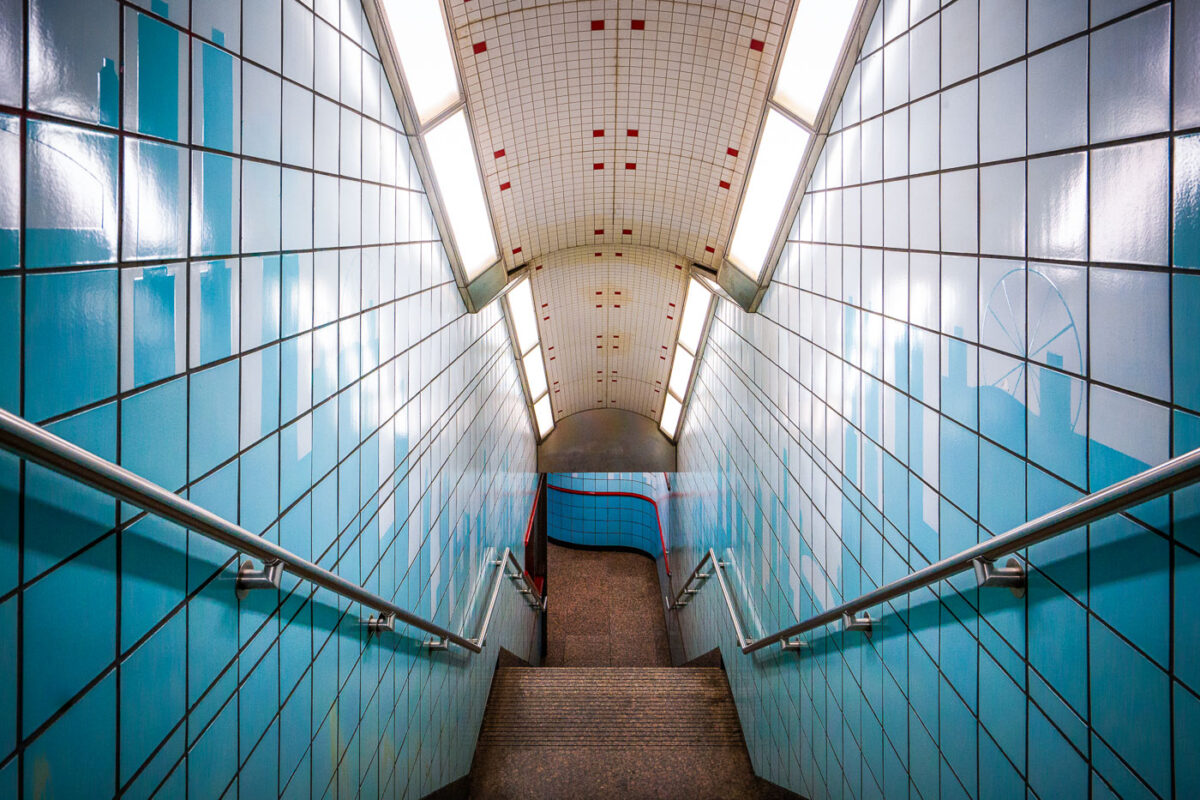
A stairway leads down to the platform at the Chicago Transit Authority’s Grand Station on the Red Line. The tiled corridor—lined with blue ceramic panels and stainless-steel railings—reflects the late-20th-century design style common to CTA subway renovations, emphasizing functionality and durable materials. The bright fluorescent lighting and tiled curvature guide commuters from street level into the subterranean rail network that connects Chicago’s North Side, Loop, and South Side neighborhoods. The subtle skyline motif on the tiles pays homage to the city’s architectural identity while marking one of the Red Line’s busiest downtown access points.
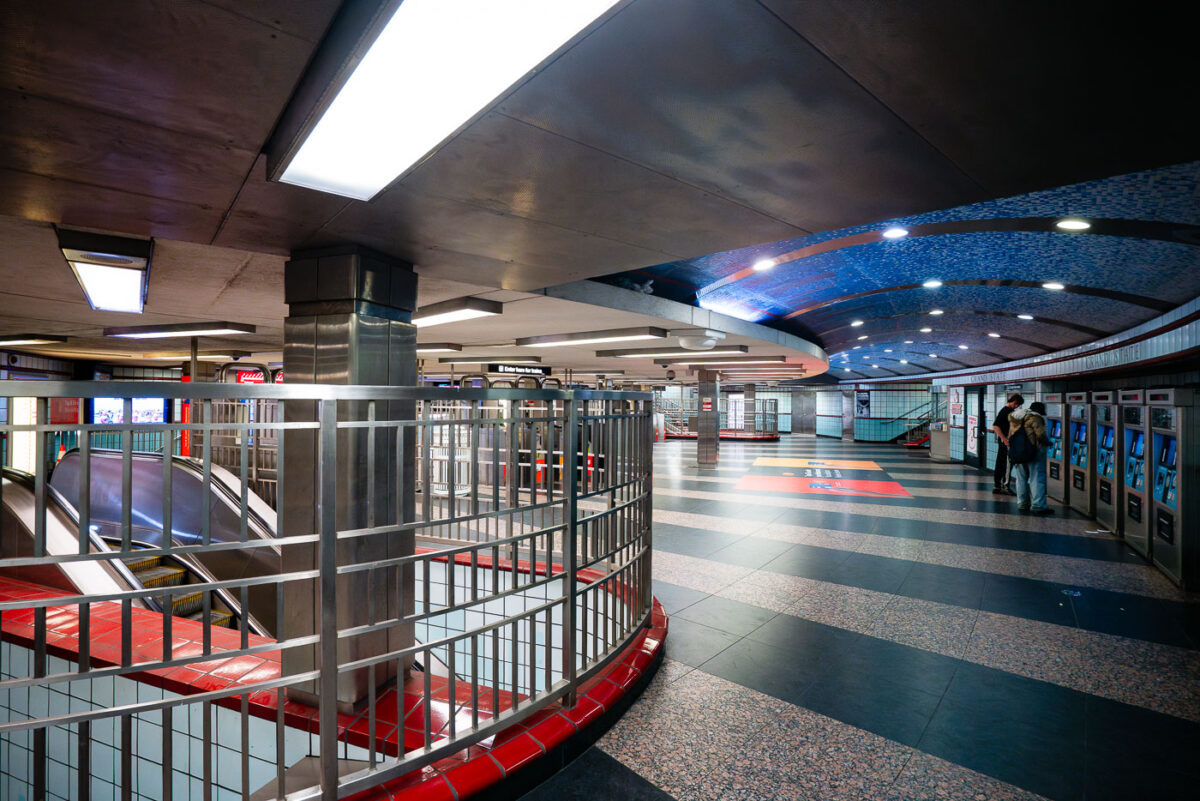
Passengers purchase tickets inside the Grand/State train station in Chicago.
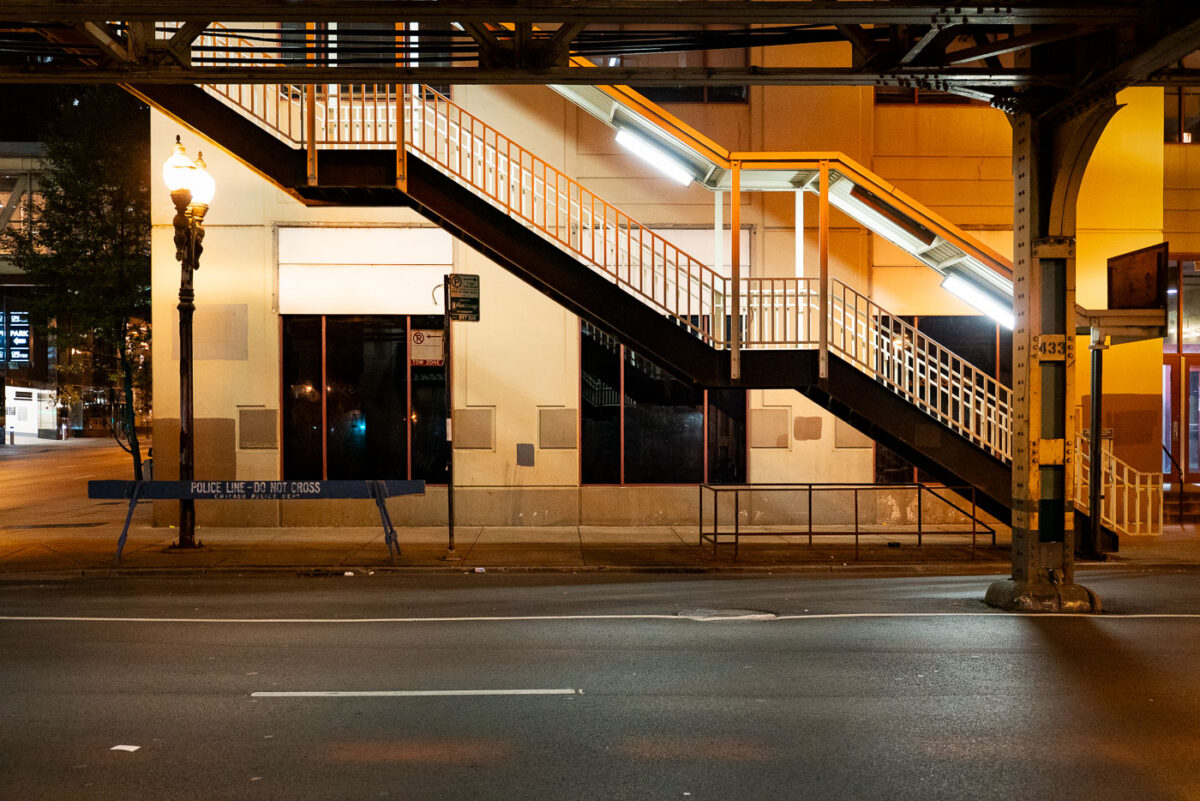
An illuminated stairway leads up to one of Chicago’s iconic “L” (elevated) train platforms in the Loop at night. The steel structure, marked with the system’s signature riveted beams, is part of the century-old elevated rail network that defines the city’s core transit identity. Below, a “Police Line – Do Not Cross” barricade and the quiet, empty street evoke a rare moment of stillness in an area usually dominated by the hum of trains and late-night traffic. This view highlights the utilitarian geometry and enduring presence of the Chicago Transit Authority’s elevated system, still serving as the backbone of the city’s rapid transit since the late 19th century.
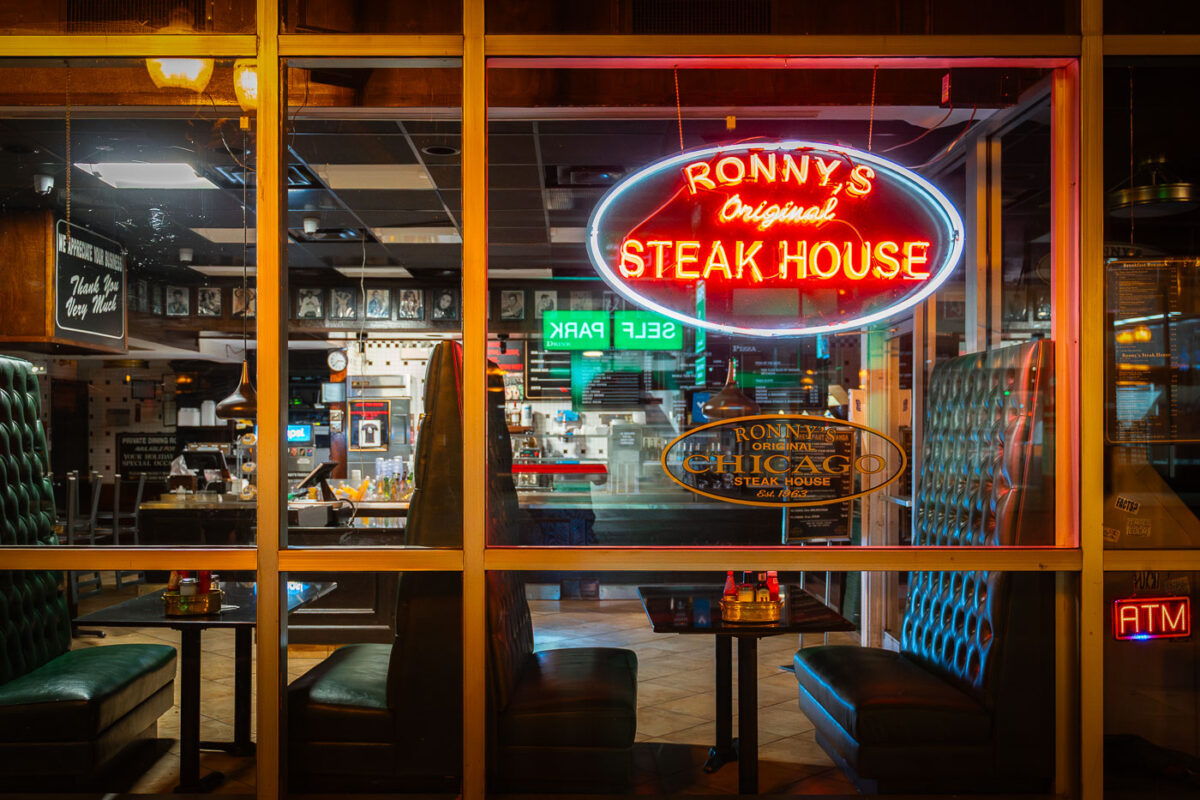
Ronny’s Original Steak House, a longtime fixture of Chicago’s Loop dining scene, glows under its vintage neon sign at night. Founded in 1963, the cafeteria-style steakhouse has served generations of downtown workers, theatergoers, and travelers from its no-frills location near the CTA Red Line and City Hall. Its tufted green booths, mirrored walls, and steady stream of regulars evoke an earlier era of affordable downtown dining—one of the few survivors of mid-century Loop eateries that once defined the city’s commercial core.
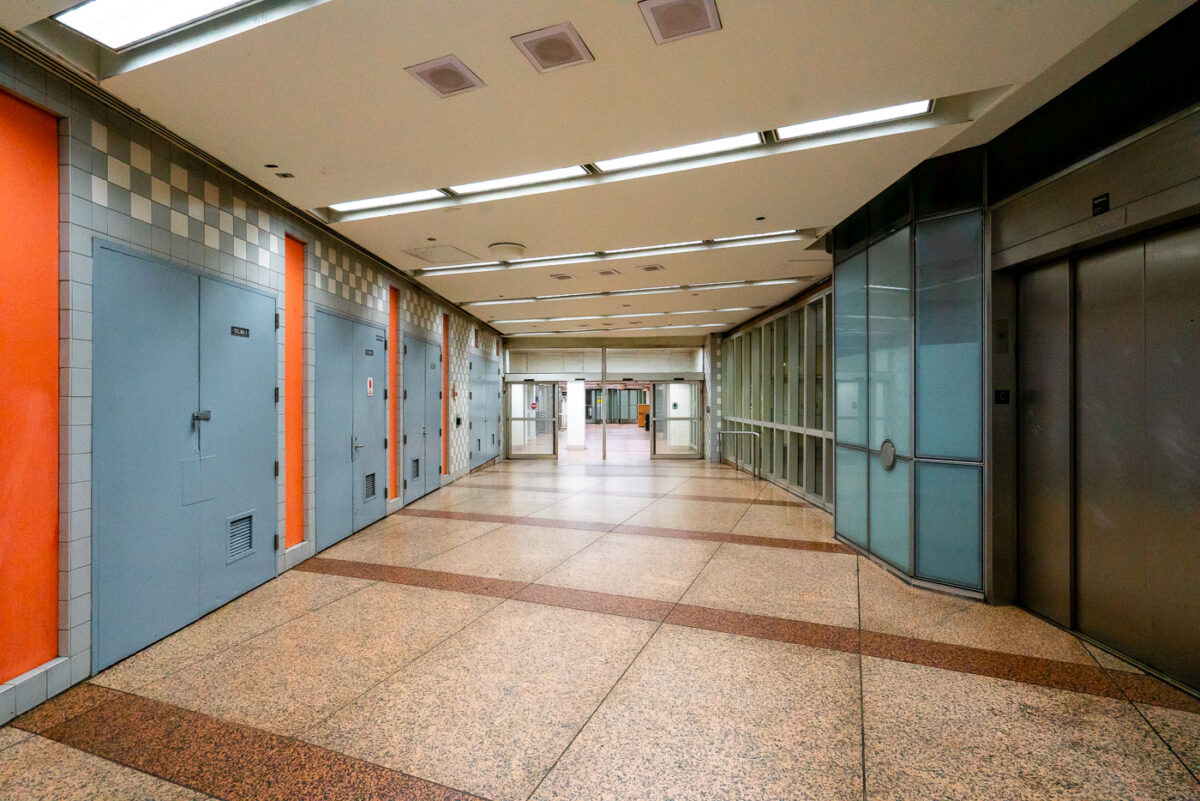
An empty corridor of the Chicago Pedway connects the Randolph/Washington subway station to surrounding office buildings and shopping centers beneath the Loop. The Pedway system, developed beginning in the 1950s, extends for more than 40 city blocks, linking major transit lines with civic and commercial spaces. Its mid-century design—terrazzo floors, tiled walls, and fluorescent lighting—reflects the city’s practical approach to all-weather pedestrian infrastructure, a defining feature of downtown Chicago’s urban core.

The curved platform of a Chicago Transit Authority Blue Line station reveals the utilitarian design of the city’s subway infrastructure, part of the Milwaukee–Dearborn subway opened in 1951. The tunnel’s tiled blue panels and low arched ceiling reflect the postwar engineering era that brought rapid transit beneath the Loop and the West Side, connecting O’Hare International Airport to downtown. Despite its age, this corridor remains a vital artery in Chicago’s daily commuter network, a symbol of mid-century urban mobility still in constant motion beneath the city streets.
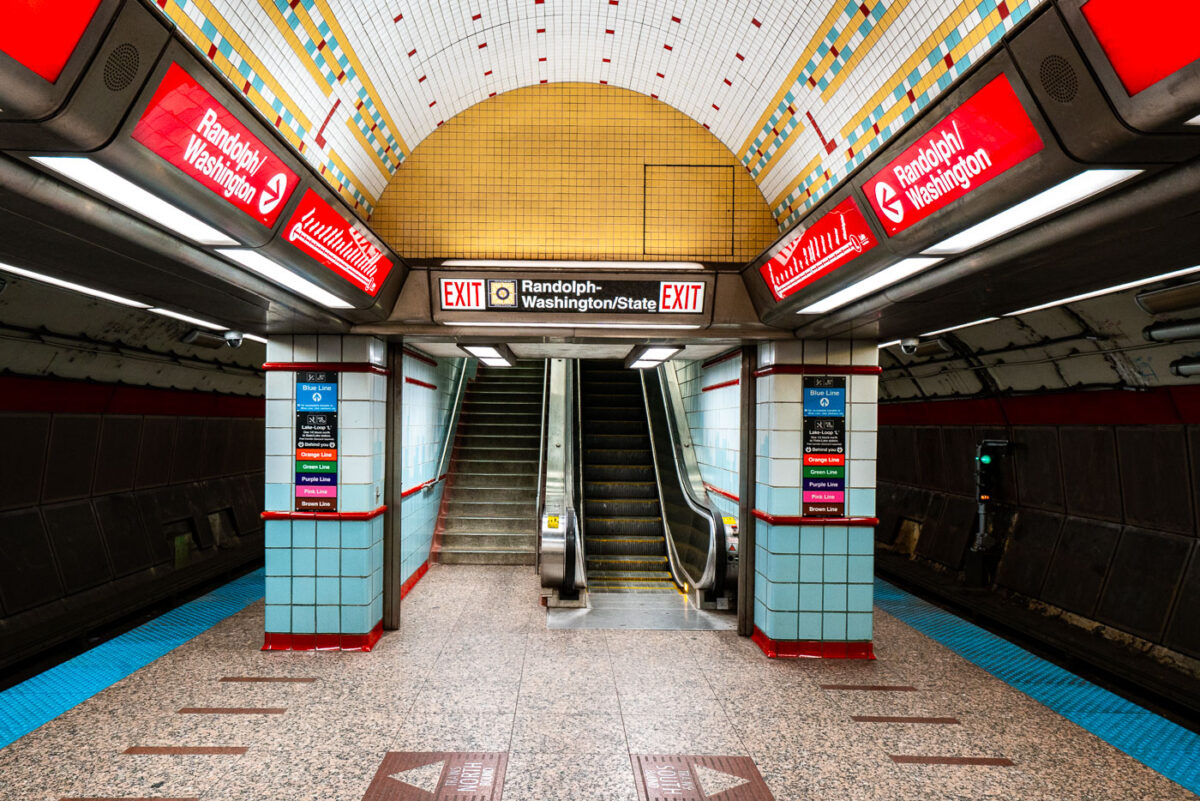
Randolph/Washington station sits beneath the heart of downtown Chicago, forming part of the CTA Red Line that runs through the State Street subway. Opened in 1943 as part of the city’s ambitious subway expansion, the station connects directly to the extensive Chicago Pedway system, linking offices, retail centers, and civic buildings underground. Its tiled vault and distinctive 1940s-era design remain largely intact, representing the Art Moderne phase of Chicago’s transit infrastructure.

The Chicago Transit Authority’s Sox–35th station serves the Red Line on the city’s South Side, positioned above the Dan Ryan Expressway near Pershing Road. The station provides direct access to Guaranteed Rate Field, home of the Chicago White Sox, whose name can be seen across the pedestrian bridge in the background. Opened in 1969 as part of the Dan Ryan branch of the Red Line, the elevated structure was designed for efficiency amid highway traffic, symbolizing mid-century Chicago’s integration of mass transit and freeway infrastructure.
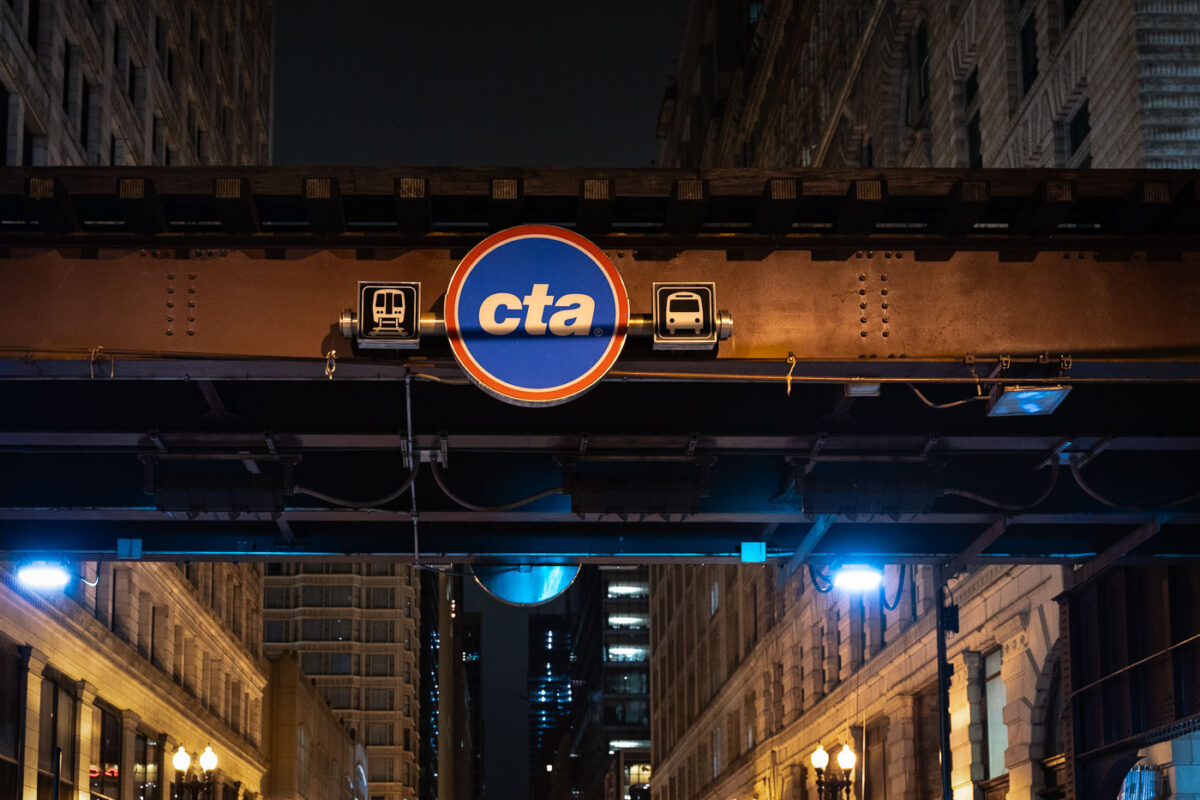
The Chicago Transit Authority (CTA) logo is displayed beneath the steel elevated tracks that define the Loop, the city’s central business district. The structure, part of the “L” system first built in the late 19th century, remains one of Chicago’s most enduring symbols of urban mobility. Overhead girders and riveted beams—many still original to the early 1900s—carry trains above streets lined with early skyscrapers and historic facades. The CTA continues to operate one of the largest and oldest public transit networks in the United States, moving more than a million riders daily through Chicago’s interconnected system of rail and bus lines.
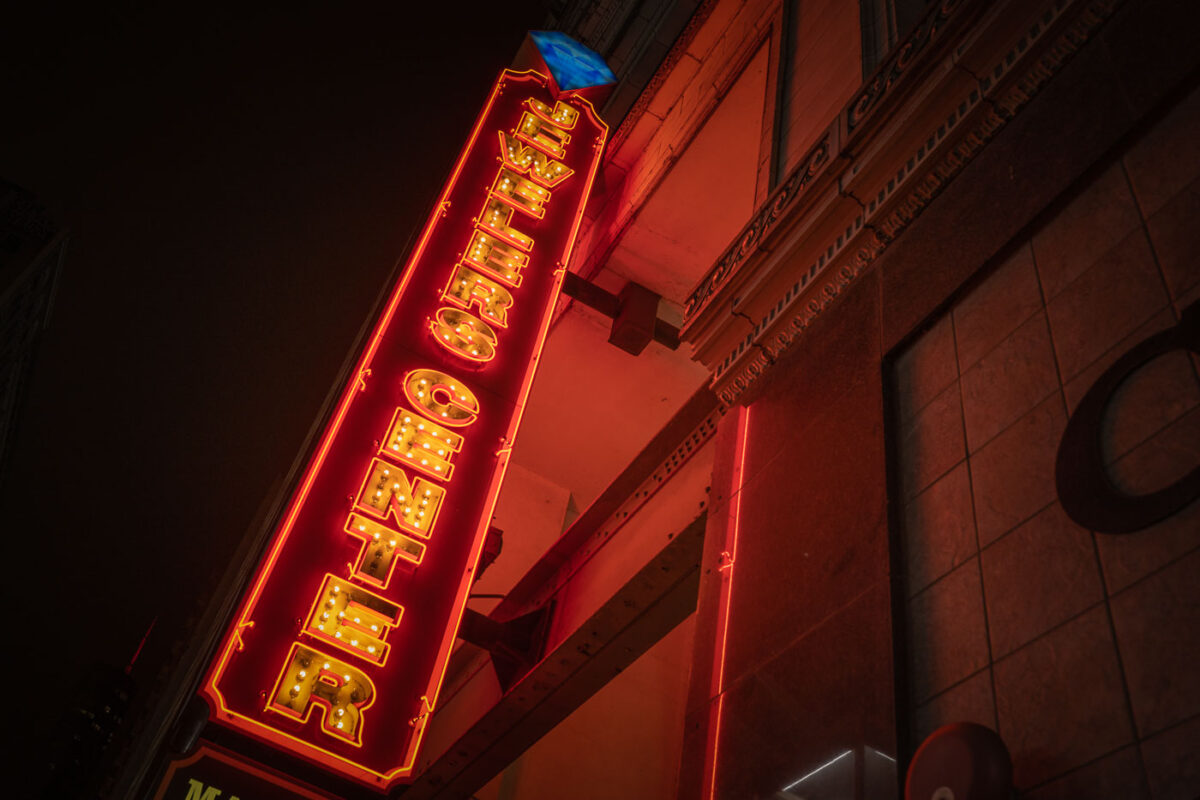
The illuminated marquee of the Jewelers Center glows along South Wabash Avenue in Chicago’s historic Jewelers Row District. Located at 5 S Wabash, this 1920s-era Art Deco building is home to more than 180 independent jewelers and gem traders, many specializing in custom design and repair. The tower, part of the landmark Mallers Building, stands within the Loop’s long tradition of craftsmanship and trade that dates back to the city’s early commercial boom. At night, the neon-lit sign continues to evoke Chicago’s mid-century downtown energy, linking the modern financial core with its industrial and artisanal past.

The Archer Daniels Midland (ADM) headquarters in downtown Chicago, Illinois, represents the global reach of one of the world’s largest agricultural and food processing corporations. Founded in 1902, ADM moved its main offices to Chicago in 2014 after more than a century in Decatur, Illinois. The company plays a major role in grain trading, oilseed processing, and biofuels, influencing commodity markets and global food supply chains. Its Chicago location, near the Chicago River and the city’s historic financial district, reflects the enduring link between Midwest agriculture and the global commodities trade that has long defined Chicago’s economic identity.

Buildings in downtown Chicago.
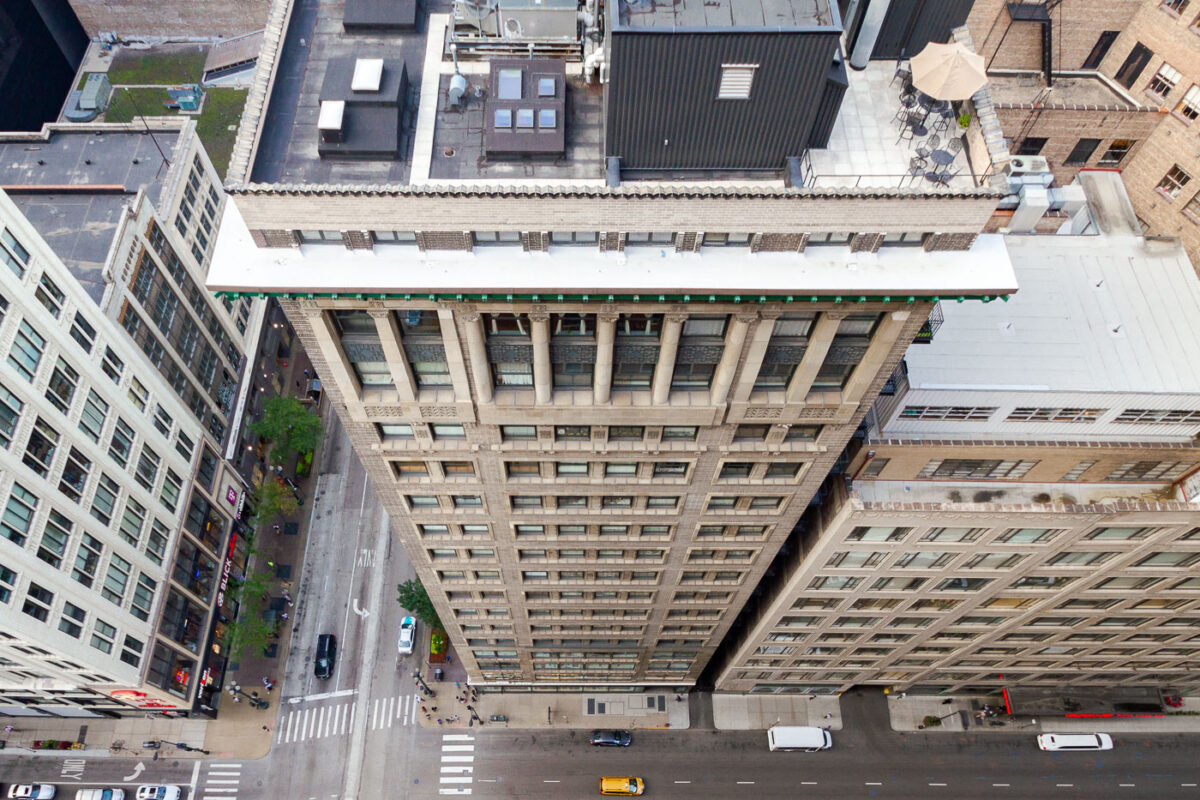
Chicago as seen from the Palmer House.
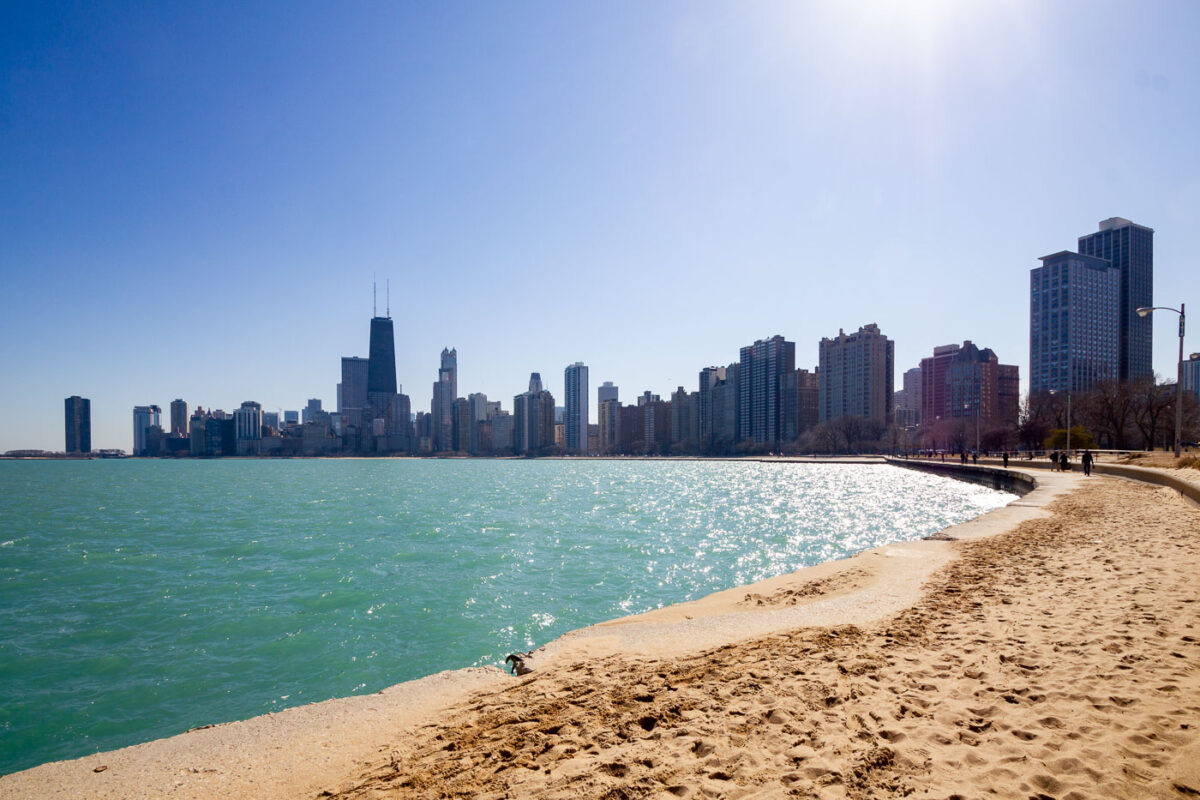
Lake Michigan shore in Chicago, Illinois.
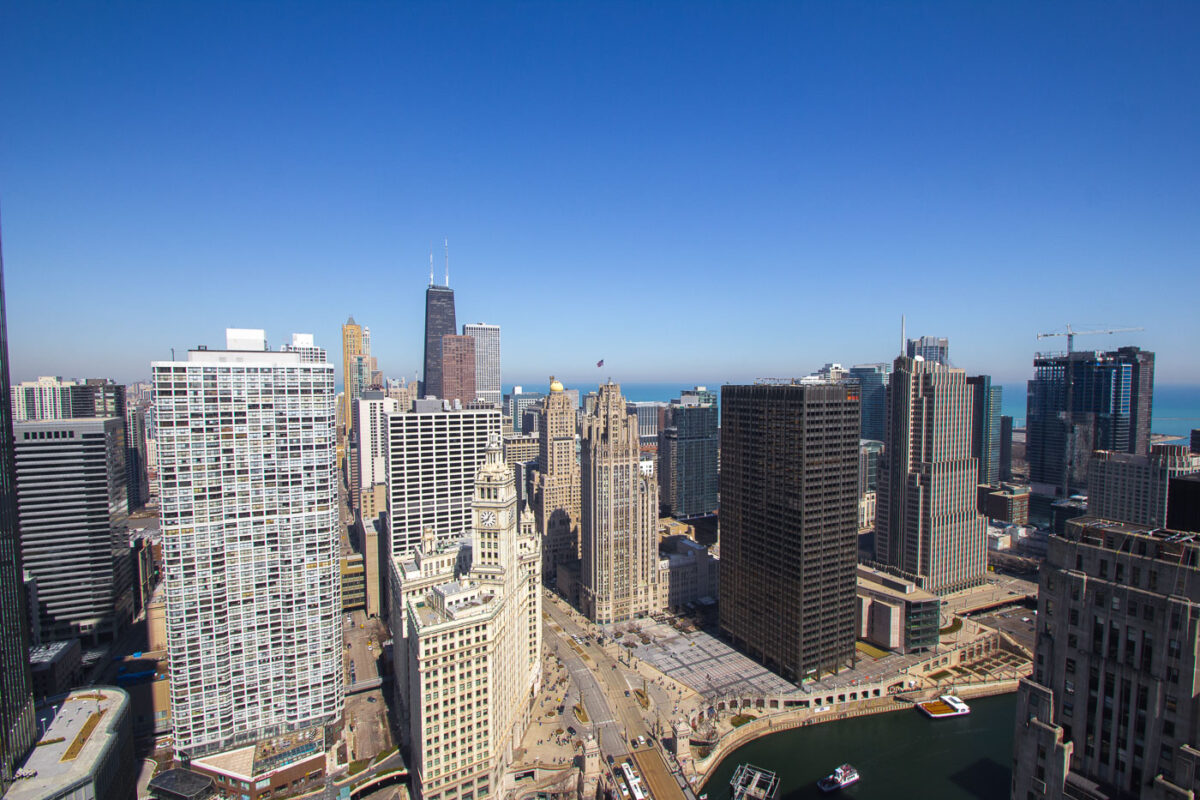
The Chicago River in Downtown Chicago.
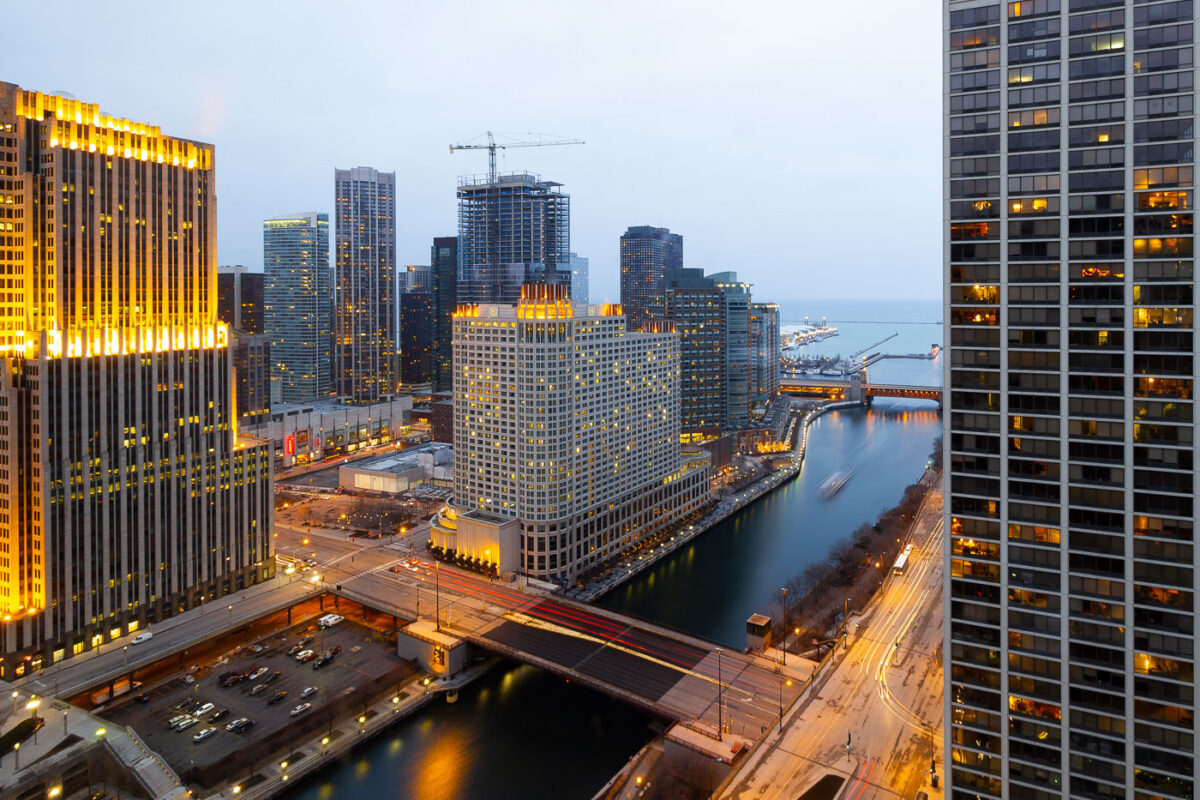
The Chicago River and Wacker Drive in Chicago Illinois. Loews Hotel under construction.

A colorful photo of downtown Chicago buildings at night in 2014.